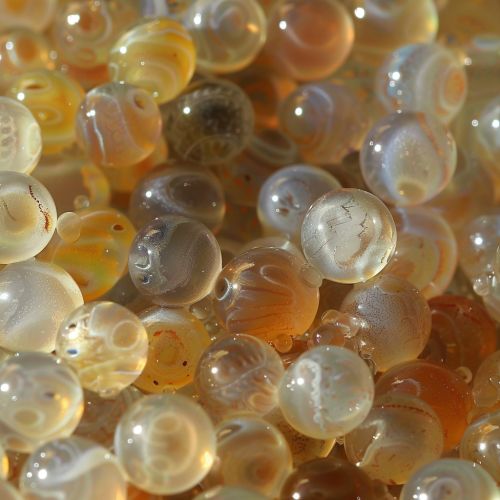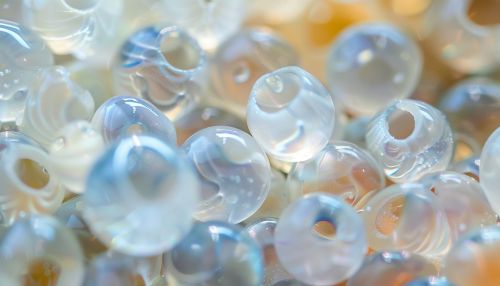Fish egg
Overview
Fish eggs, also known as roe, are the fully ripened unfertilized or fertilized eggs of fish or certain marine animals. They are a vital part of the life cycle of fish and have significant ecological, economic, and culinary importance worldwide.


Biology and Life Cycle
Fish eggs are produced by female fish, a process known as spawning. The eggs are typically round and translucent, often brightly colored, and vary in size depending on the species. The process of egg production and release is complex and involves various stages of development, from the initial formation of the egg in the female's ovary to its release into the water.
Formation and Release
The formation of fish eggs begins in the female's ovary, where they develop from immature oocytes into mature eggs ready for fertilization. This process involves the accumulation of yolk, a nutrient-rich substance that provides nourishment for the developing embryo. Once the eggs are fully developed, they are released from the ovary into the water in a process known as spawning. This can occur in various ways, depending on the species of fish.
Fertilization and Development
In most species of fish, fertilization of the eggs occurs externally in the water. The male fish releases sperm, known as milt, into the water, which fertilizes the eggs. Once fertilized, the eggs begin to develop into embryos. This process involves cell division and differentiation, leading to the formation of various body parts and organs.
Hatching and Growth
The length of time it takes for fish eggs to hatch varies greatly depending on the species and environmental conditions. Once hatched, the young fish, or larvae, are typically very small and vulnerable. They feed on the remaining yolk in the egg for nourishment until they are able to feed on their own.
Ecological Importance
Fish eggs play a crucial role in the ecosystem. They are a primary source of food for many marine and freshwater species, contributing to the overall health and diversity of aquatic ecosystems. In addition, the process of spawning and egg development is a key component of the life cycle of many fish species, influencing population dynamics and species distribution.
Economic Importance
Fish eggs are also of significant economic importance. They are a major source of income for many fisheries around the world, particularly those involved in the production of caviar. Caviar, a luxury food product, is made from the eggs of certain species of sturgeon. Other types of fish eggs, such as salmon roe, are also used in various culinary applications.
Culinary Uses
Fish eggs are a popular ingredient in many types of cuisine. They are often used in sushi and other Japanese dishes, as well as in various European and Middle Eastern dishes. The taste and texture of fish eggs can vary greatly depending on the species and preparation method.


Conservation Issues
Despite their importance, fish eggs and the species that produce them are facing numerous threats. Overfishing, habitat destruction, pollution, and climate change are all contributing to declines in fish populations and the availability of fish eggs. Efforts are being made to conserve these species and their habitats, but many challenges remain.
